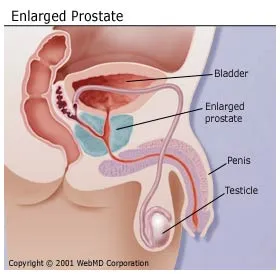There are approximately 25 000 men newly diagnosed with prostate cancer each year in the UK. For these people the risk of dying from their prostate cancer depends on the number of risk factors. For example, if the cancer is confined to the prostate gland at diagnosis the chance of surviving 5 years was 70%. If the cancer has already spread to the bone as it only 20% of women will survive five years. Of all the people who currently have prostate cancer in the UK, about 10,000 will die from the disease every godine.Preživljavanja prostate cancer rate was significantly higher in the developed world - wonder
.When the first man was diagnosed with prostate cancer then the doctor who found the cancer (the most "urologist" - a surgeon who specializes in looking after the problems associated with kidney, prostate and bladder) will organiziratiniz tests to assess the risk for that particular pacijenta.Rezultati these tests in turn will help physicians and patients to decide the best treatment for this patient.
prostate cancer tests to help predict survival
1 Prostate-specific antigen or PSA
2 Digital rectal examination or DRE
3 Trans-rectal ultrasound and biopsy
4 CT or MRI scan
5 Bone scan
PSA
This is a protein made by the prostate that can be measured on a blood sample for the test krvi.Razina PSA can be increased without the problem of prostate cancer, ie, not all people who have elevated PSA have prostate cancer. Also some people who have prostate cancer will not have raised PSA. However PSA does not tend to increase as prostate cancer grow, invade and spread, PSA can be used to track how prostate cancer progresses or how to respond to treatment.
DRE
This is where the doctor feels the prostate through the back passage. It tells the doctor how great the prostate gland, is a cancer can be felt easily, and whether the attacked area in the immediate vicinity.
trans-rectal ultrasound and biopsy
For this test you lie on your side with your knees raised in the chest (the same position as the DRE). An ultrasound probe is then inserted into the back passage. This allows the doctor to see on-screen display space. No radiation that uključeni.Slike on the screen then allows the doctor to insert a needle into the prostate surely take some samples of prostate tissue. Typically, several samples were taken from each area of the prostate. These samples were then sent to a laboratory to be looked at under a microscope. This provides confirmation that prostate cancer is present and tells us how aggressive cancer looks like. Sometimes a local anesthetic is used to help make the process more enjoyable.
CT or MRI scan
This is usually done in x-ray department and involves lying still on the small couch which moves through either a ring (CT) or in a long tunnel (MRI). It is not painful in any način.Slike obtained from this test helps doctors to see whether prostate cancer is still in the prostate or whether it began to fall from the gland to other surrounding structures. It tells the doctor what "stage" prostate cancer is.
Bone scan
It requires you to be shot, and then lie down on a special table where the camera scans the entire body. This shows that if any of the bones in the body are affected by prostate cancer, or whether prostate cancer has spread to the bones.
prostate cancer stage and survival
prostate cancer stage describes how far the cancer has spread and grown. It assesses the mix of DRE and CT / MRI.
T1 stage
This is a very early prostate cancer that can only be seen under a microscope. At this stage, the cancer will not cause any symptoms. Men with this stage are at low risk of their disease may not need any treatment, but nadzor.Izvorni cause of the problem of prostate cancer can be difficult to diagnose.
T2 phase
It was early prostate cancer, but is now big enough to feel the doctor DRE. May it still did not cause any symptoms. It is usually cured if treatment is carried out at this stage and about 70% of men are still alive after 5 years, the average length of survival from diagnosis is more than 5 years.
T3 Stage
This is a locally advanced prostate cancer that has started expanding and fall outside the prostate. This phase would often cause symptoms of the bladder in men. At this stage of the disease the chance of cure with treatment is reduced, however, survival is often about five years.
T4 stage
It is more advanced prostate cancer that attacks the structures around the gland. At this stage there are often secondary, but as bone metastases. If the disease spread is usually incurable, but can be controlled to some vrijeme.Prosječna survival is between 1 and 3 years.
Predicting survival in prostate cancer
Doctors use a combination of risk factors for predicting the behavior of prostate cancer, but cancer does not always act in accordance with očekivanjima.Faktori considered include cancer stage (see above), patient age, PSA level, and how fast it grows, and score.Gleason Gleason score is a marker of how aggressive cancer looks under a microscope and how the gland affected by cancer.

{ 0 comments... read them below or add one }
Post a Comment